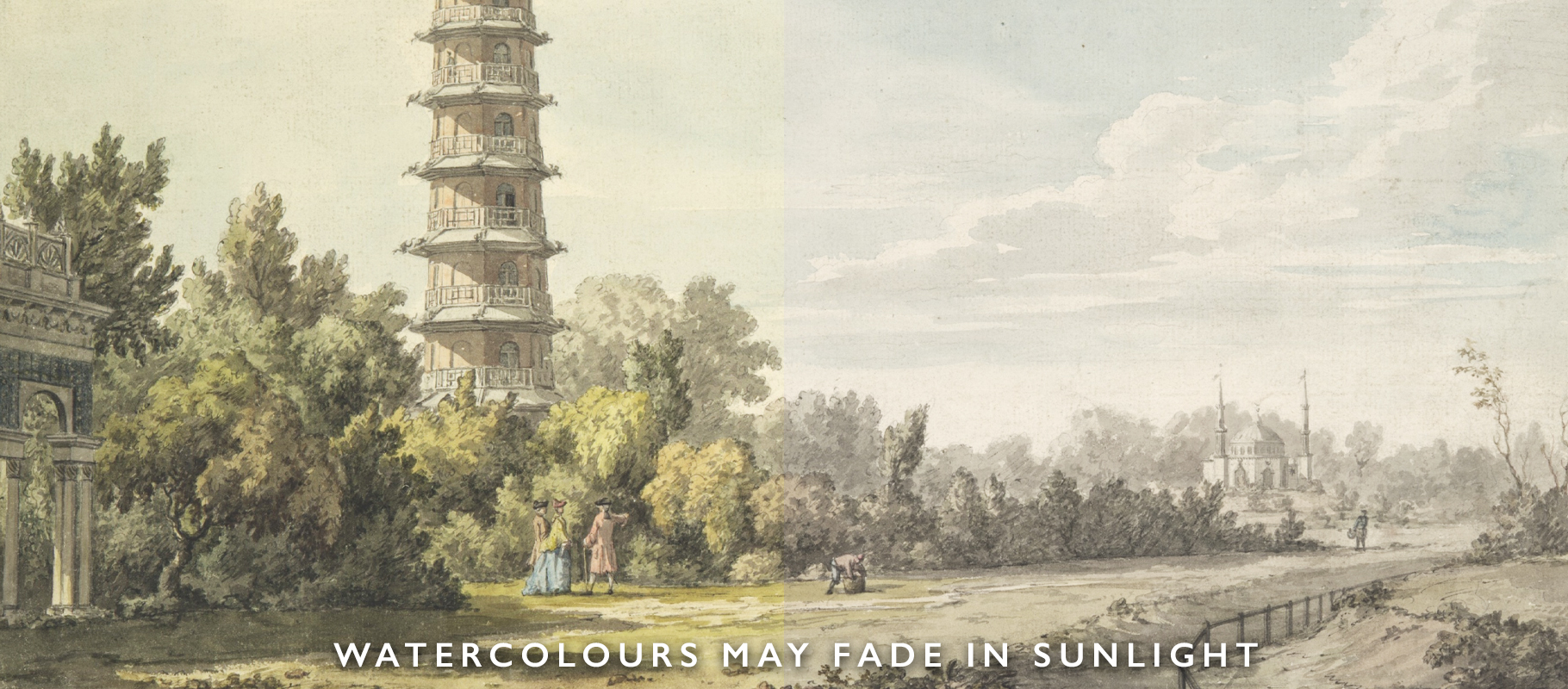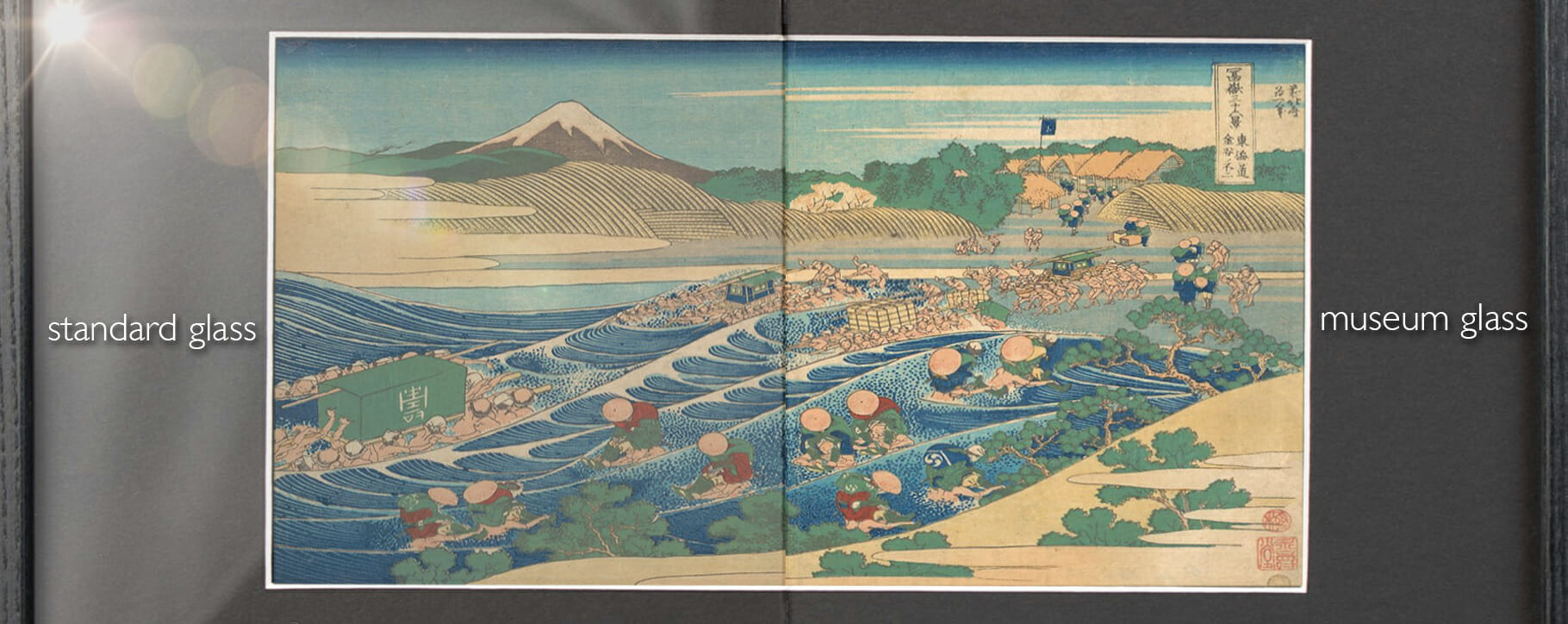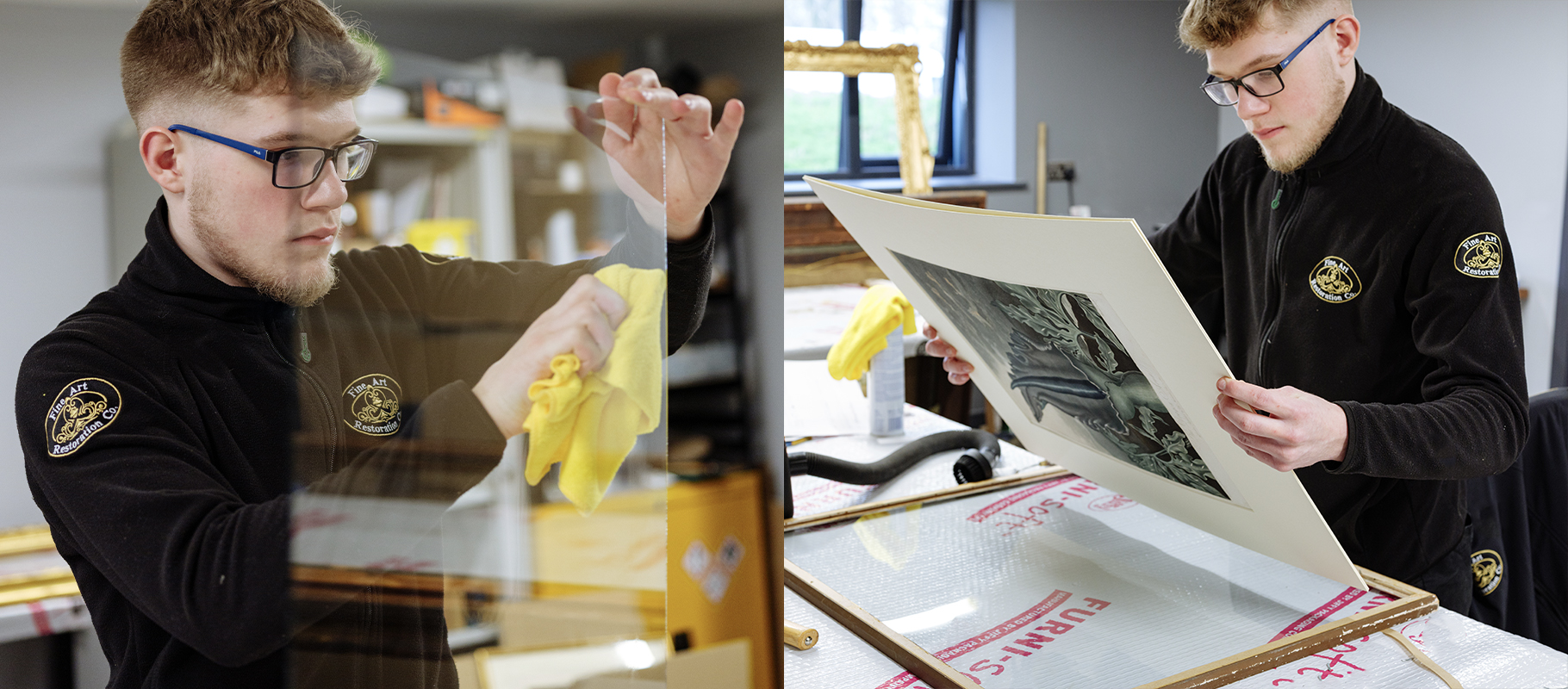When it comes to protecting artworks such as works on paper, works on silk and tapestries from damage, the most effective solution is to add glazing. The quality of glazing used can offer greater protection for the piece and assist in its long-term care.
The addition of glass helps to protect artworks from airborne contaminants such as smoke, nicotine and general debris, as well as harmful and discolouring UV rays from sunlight.

Filtering UV rays is especially important for works on paper. Artwork such as watercolour paintings and prints can fade to a point of near-invisibility if they are not properly protected or displayed.
Some colours are more susceptible to fading in sunlight, this depends on how resilient or ‘lightfast’ they are. Modern paint includes ‘lightfast’ colours which can hold a stronger defence against UV rays, but the organic nature of historic paints means that many shades are more likely to be adversely affected by lack of UV filtering.

Red shades are the most likely to fade fast, creating a flat effect in areas of the artwork where it is present. Whilst cobalt blue has been known to withstand for centuries without fading, if the pigment is lightened with a white pigment it is more likely to be affected by sunlight.
Naturally derived pigments have many of the same issues you may consider organic matter to face over time, with heat and sunlight progressing decay at a faster rate. For example, antique Japanese prints can fade heavily due to their paint being made entirely from local botanical elements.

Limited edition or rare prints of notable value such as those by Banksy and Warhol should aim to have the highest quality of glazing for as much protection as possible. While this safeguards against fading and damage, it also protects the value of the piece.
There is a limitation to what restoration treatments can be undertaken to address fading of artworks and some can, unfortunately, be unrestorable. For artworks suffering such damage, this can impact on their value.

There are many glazing options available, from standard glazing which offers protection against dust, smoke and debris, but very little protection against UV. Whilst they have the advantage of being a low-cost option they will not protect the artwork against fading.
UV glass offers greater protection against UV compared to standard glass, typically around 70% so can be a good mid-priced option.
Museum glass offers the greatest protection, around 99% UV protection. It is more costly but advisable for valuable artworks or those with significant sentimental value. It is highly effective at minimising fading. This type of glass also offers a significant reduction in glare and can offer the appearance of being invisible so that maximum enjoyment and appreciation of the artwork can be gained.

For larger artworks such as vintage posters, glazing can be too heavy to use to provide the protection needed. In such instances, acrylic can be more appropriate to use as it is lighter in weight and offers more flexibility. Like with glass, there are differing standards of acrylic providing differing levels of UV protection. It also has the advantage of having a reduced risk of smashing if accidents were to occur.
Avoiding the display of artworks in direct sunlight will help reduce the risk of fading. Monitoring artworks regularly to ensure they are not at risk is always advisable.
If we can be of assistance with reviewing artwork and the glazing options to ensure the greatest protection, please contact us for further advice.






